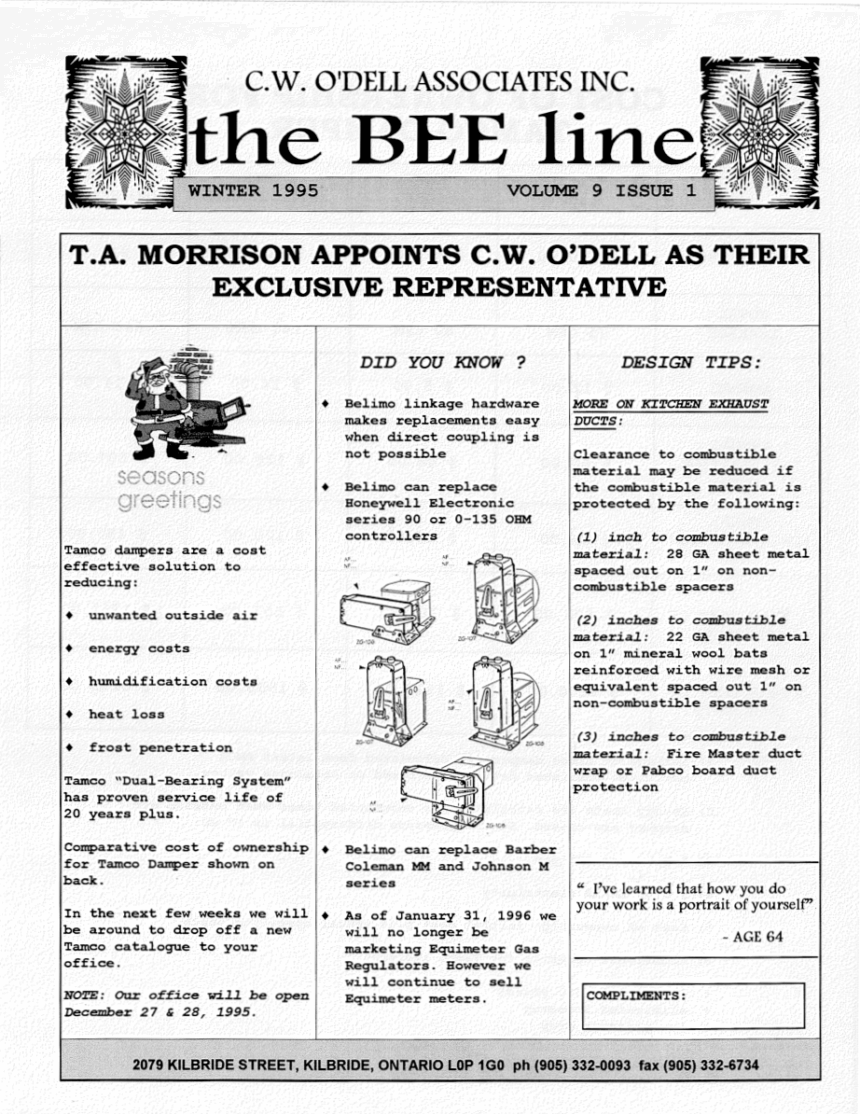
ASHRAE Finally Catches up With Chuckie!
It took more than 20 years, but the Ontario Building Code has finally caught up with our founder, Chuck O’Dell. With the recent adoption of Supplementary Standard SB-10: Energy Efficiency Requirements, damper requirements have finally been mandated by code. It just so happens that O’Dell’s Winter 1995 issue of the BEE line mentioned the importance of high-performance dampers
Not only do they offer reliable operation, but they also save money. Check out the original newsletter, which is as applicable today as it was in back then.
Division 3 of SB-10 is where the meat of the standard, relating to HVAC, can be found. Fundamentally, SB-10 outlines three compliance paths to meet minimum efficiency requirements.
Section 6 of ASHRAE 90.1-2013: Energy Standard for Buildings Except Low-Rise Residential Buildings, sets the minimum leakage for dampers communicating with the outdoors (i.e. intake and exhaust). The rules are really quite simple to follow as long as you know what climatic zone you live in. In Ontario, we fall under zones 5, 6 and 7, so the following table applies:
| Building Size | Air Intake | Exhaust/Relief Air | ||
| Non-motorized | Motorized | Non-motorized | Motorized | |
| Fewer than three stories | N/A | 4 | 20 | 4 |
| Three or more stories | N/A | 4 | N/A | 4 |
Table: Maximum Damper Leakage, cfm per ft2 at 1.0” WC per AMCA Standard 500
In Zones 5,6 and 7, there are two exception to the above table:
- Acceptance of non-motorized dampers where airflow is 300-cfm or less, without restriction on building size.
- Non-motorized exhaust dampers smaller than 24” in either dimension may have leakage of 40 cfm/ft2
So what does all this mean?
Non-motorized dampers: Standard commercial BDDs with blade-edge seals will have sufficient leakage performance. In general, the use of BDDs has been significantly limited, so consider eliminating these from your specifications because they’re just leaking money!
Motorized dampers: Your project specifications will need to outline a leakage classification of Class 1 (min) or Class 1A. All other classifications of damper DO NOT meet the standard. Check your specs and get rid of any reference to triple V-blade dampers for intake and exhaust applications. At a minimum, you’ll need to use an airfoil blade damper such as Tamco 1000 or Alumavent 3160.
Looks like the industry should have listened to Chuck O’Dell a long time ago. He definitely understood the value of quality products!


Leave a Reply